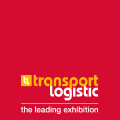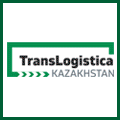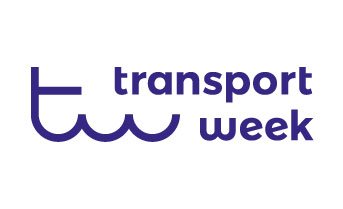APM TERMINALS, the container port operator unit of Denmark's AP Moller group, is to open a container terminal at Port of Rotterdam's Maasvlakte II area and aims to double productivity when operational in November 2014, building begins in June 2012.
The first phase will be able to handle 2.7 million TEU annually through the use of quay cranes and place them on one of 36 lift-automated guided vehicles (Lift AGVs). The 15 metres long and three metres wide Lift AGVs are capable of carrying two containers per move at a speed of 22kph using onboard navigation system to then place them in one or two of the 128 storage racks.
The new lift AGVs built by German unit of Demag Crane, Gottwald Port Technology is powered by low-noise diesel-electric motors with feasibility studies in progress for full electric power.
The ability for AGVs to place in storage racks for the first time supports the terminal's productivity improvements of 25 to 50 per cent compared to conventional terminal designs, said the company's Maasvlakte II managing director Frank Tazelaar of equipment due for delivery first quarter 2013 for testing.
Source Shipping Gazette - Daily Shipping News
MANZHOULI customs checkpoint, in north China's Inner Mongolia, is expecting to see trade volume reach 28.11 million tonnes by the end of the year, and increase of 5.7 per cent year on year, Xinhua reports.
During the first two months of this year, the checkpoint handled 4.16 million tonnes of imports and exports, up 24.1 per cent year on year.
In 2011, Manzhouli checkpoint recorded a throughput of 26.6 million tonnes. Foreign trade value increased 9.4 per cent to US$3.5 billion. It was named one of the top 10 timber import checkpoints in China last year and resumed import of coal. Its import of mineral powder, timber and export of mineral products and construction material all recorded robust growth of over 20 per cent.
Manzhouli is the largest overland checkpoint in China. It handles 70 per cent of the Sino-Russian trade cargo.
Source Shipping Gazette - Daily Shipping News
KNOWN as rival ports, Kenya's Mombasa and Tanzania's Dar es Salaam say they are now working together to improve efficiency and serve the region better, reports Xinhua.
Kenya Ports Authority (KPA) managing director Gichiri Ndua and Tanzania Ports Authority port manager Cassian N'gamilo said the two ports are not competing but complementing each other, sharing information, skills and strategic planning.
The officials are on a two-day on-spot assessment of the operations of the two ports, saying they share a lot of commonalities and interaction that there is no room for competition, said the report.
"The growth in cargo volumes and hence the demand for services at the port of Mombasa has grown progressively and there is need for capacity expansion," Mr Ndua told a team of ministers from EAC Partner States and EAC Secretary General Ambassador Richard Sezibera at Mombasa.
The ministers are appraising existing problems, solutions that have been introduced and ongoing reforms at the ports as well as assessing the real time in clearing goods at the ports.
Reforms have been introduced, including a single widow programme and 24-hour operations, as well as a grace period for shippers to clear cargo without demurrage.
Mr Ndua said Mombasa still faced adequate port capacity to meet increasing demand, inadequate equipment, lack of adequate investments in infrastructure, as well as infrastructure constraints extending beyond KPA to road and rail networks, systems as well as the slow introduction of new technology.
Cargo volumes through Mombasa had increased 25 per cent since 2007 and the port traffic had increased from 10.5 tonnes to 19.9 tonnes last year 2011.
Mr Ndua said Mombasa Container Terminal was developed in 1980s with a capacity of 250,000 TEU but container had increased to 770,804 TEU in 2011.
Source Shipping Gazette - Daily Shipping News
THE Port of Oakland has docked the largest containership ever to call at ports in North America, the 12,562 TEU MSC Fabiola, which is part of the fleet of the world's second-largest shipping line, Geneva's Mediterranean Shipping Company.
The vessel arrived from Long Beach and was berthed at Oakland International Container Terminal for an overnight stay before departing for an 18-day transpacific voyage to Fuzhou and then onto four other ports in China.
"Hosting the largest containership ever to call in North America is what we mean when we say that the Port of Oakland is 'world class, world fast'," said Oakland port commission president Pamela Calloway.
"We invest in our terminals, navigation channels and landside infrastructure to welcome these ships because they are the cleanest and safest in the industry. They are also where the industry is headed and where we must head to continue to compete."
The MSC Fabiola is almost a quarter of a mile long, more than the length of four football fields or about equal to the height of a 55-storey building. If all of the containers that fit on the ship were put end to end, they would stretch almost 50 miles.
Source Shipping Gazette - Daily Shipping News
JAPANESE shipping giant NYK has been included in the list of "2012 World's Most Ethical Companies" by the US think tank Ethisphere Institute which has awarded the company the honour for the fifth consecutive year.
"The World's Most Ethical Companies designation recognises leading companies that truly go beyond making statements about doing business ethically and translate those words into action," a company statement said.
It said it is the only shipping company to be included among the 145 companies listed, and only one of six Japanese companies recognised.
In compiling the "2012 World's Most Ethical Companies" the Ethisphere Institute examined companies from 100 countries and 48 industries.
They were judged in the areas: ethics and compliance programmes; reputation, leadership and innovation; governance; corporate citizenship and responsibility and culture of ethics.
Source Shipping Gazette - Daily Shipping News
GLOBAL supply chain giant CEVA Logistics has announced the appointment of Franck Chevret as senior vice president for France.
Mr Chevret will report to CEVA's northern European president Leigh Pomlett and will be responsible for further development of supply chain solutions for new and existing customers. In addition, he will continue to embed CEVA's programme of "Operations Excellence" across all departments, said a company statement.
He joins CEVA from DHL Supply Chain, where he has worked since 2005 and was managing director for Russia, Romania, Poland, Ukraine and also Morocco. Before this, he held several management posts in Danzas and Exel.
"We are delighted to welcome Franck to CEVA's team. We are certain that his expertise in the logistics industry and his leadership will be crucial to further developing our activities in France," said Mr Pomlett in a company statement.
Source Shipping Gazette - Daily Shipping News
THE British International Freight Association (BIFA) has declared that the British government budget does not address its members concerns on fuel prices.
"It is disappointing that the fuel duty increase planned for August 2012 has not been scrapped in today's Budget," said BIFA director general Peter Quantrill.
"Such a move would have sent out a positive message from government to businesses in our sector, which operate on the tightest of margins and put us in a better position to both facilitate international trade and compete on a level playing field with foreign competition," he said.
But Mr Quantrill also welcomed news of the government's decision to waive backdated business rate bills for port-based companies and that the tax on heavy trucks would be frozen.
"We are also pleased to hear that the coalition government intends to double UK exports to GBP1 trillion (US$1.5 trillion) this decade which would bring additional business to BIFA members. It is also positive that the government is prepared to confront the lack of airport capacity in the south-east. We now look forward to hearing more about government initiatives which will deliver on these announcements," he said.
"We note that the government will take forward many of Alan Cook's recommendations for the roads, including developing a national roads strategy and setting a renewed focus on the level of performance expected from the Highways Agency," said Mr Quantrill.
"We also note that the government will consider whether to go further and will carry out a feasibility study into new ownership and financing models for the national road network. BIFA will now look into how we can contribute to that study," he said.
"Our members are still being hit by the high cost of fuel and we would still like to see the introduction of an essential user rebate and a review of the fuel duty increase planned for August 2012," said Mr Quantrill.
The government's recent announcements about differing means of investing in road transport infrastructure is good news for its members, but road pricing schemes could burden companies bottom lines, he added.
Source Shipping Gazette - Daily Shipping News
THE US Coast Guard is preparing for demonstrations to protest oil drilling in the Chukchi Sea this summer following protests at New Zealand's Shell Oil drilling ship, said Alaska USCG chief of staff Captain Norman (Buddy) Custard.
To prevent any disruption caused by the protests likely to take place during its busiest fishing month of June, the coast guard it will deploy a small boat force from Dutch Harbor, said Capt Custard.
The presence of the USCG is to make sure port activity isn't disrupted for vessels and for food, fuel and other shipments into the city of Unalaska.
"We're not here for Shell, we're here to ensure safe commerce and transportation," he said, reported the local paper, Juneau Empire.
It also is on alert for increased air traffic between Shell's Barrow staging area, other possible shipping incidents and offshore operations which may require a coast guard response.
Source Shipping Gazette - Daily Shipping News
MEMPHIS based FedEx Corporation has posted a 126 per cent third quarter net profit increase to US$521 million, up 126 per cent year on year with revenue up nine per cent to $10.56 billion.
"FedEx results were driven by improving yields, record holiday package shipping and exceptional performance at FedEx Ground," said FedEx chairman, president and CEO Fred Smith of the quarter ending February 29.
"We expect our solid performance to continue in our fourth quarter, capping off a strong fiscal year," Mr Smith said.
The express unit's operating profit was up 96 per cent to $349 million drawn on an eight per cent increase in revenue to $6.54 billion.
FedEx Ground's operating income soared 43 per cent to $465 million, drawn on a 14 per cent revenue increase to $2.48 billion.
The FedEx Freight segment reduced its operating loss to $1 million from $110 million a year ago due to a 10 per cent increase in revenue to $1.23 billion.
Said vice president and chief financial officer Alan Graf: "We are pleased with the improved performance at FedEx Ground and FedEx Freight during our third quarter. We are evaluating actions to adjust our FedEx Express US domestic network capacity and improve efficiency."
Less-than-truckload (LTL) yield was up six per cent due to higher fuel charges and improved base yields, while the LTL average daily shipments grew two per cent because of good weather.
Source Shipping Gazette - Daily Shipping News
HONG KONG's Dragonair, sister company to Cathay Pacific Airways, has announced that three more destinations will be added to its network, with new services to Jeju in South Korea and Chiang Mai in Thailand together with the resumption of scheduled services to Taichung in Taiwan.
When Jeju flights start on May 1 and to Chiang Mai on July 1, Dragonair will be the only airline operating non-stop services from Hong Kong, the airline said.
Dragonair also said the strengthening of the airline's network will offer more options from Hong Kong and mainland China within the Asia Pacific region.
The Jeju service will begin from May 1 with three flights a week. Chiang Mai will be a seasonal scheduled service with four flights a week operating from July 1 to the end of September. Taichung will be served by two flights a day starting from May 14. All three routes will be operated by Airbus A320 aircraft.
"We believe these new and resumed services will be a significant boon in terms of developing business between Hong Kong and these three destinations," said Dragonair CEO Patrick Yeung.
"Jeju and Chiang Mai have long been popular, and through our new direct non-stop flights we will offer more choice and greater convenience to both destinations. Our service resumption to Taichung, meanwhile, demonstrates the opportunities for the development in air traffic brought by the recently signed Hong Kong - Taiwan Air Services Arrangement (ASA)," he said.
The latest network announcement follows Dragonair's resumption of services to Xian and Guilin, in April and May respectively. The airline will also boost frequencies and add capacity on a number of routes starting from the end of March. Following the above-mentioned service resumptions and the launch of new routes, Dragonair will serve a total of 38 destinations by July including 19 cities in Mainland China.
Source Shipping Gazette - Daily Shipping News
DUBAI's Emirates SkyCargo, the air freight unit of Emirates airline, recently won the Platinum Award in the category of "Air Cargo Carrier - 800,000 or more tonnes" at the Air Cargo Excellence Awards 2012 organised by Air Cargo World.
The award recognises one of the best performers in the industry, said Emirates' divisional senior vice-president cargo Ram Menen. "We are honoured to be receiving an award in a category which also featured so many major industry players.
"With our network continually growing and fleet expanding as we take delivery of new aircraft, we look forward to offering customers even greater levels of service and providing them with more international trade opportunities."
Besides Emirates SkyCargo, other finalists for this category including Lufthansa Cathay Pacific, DHL, FedEx Express, Japan Airlines, Korean Air, Lufthansa and Singapore Airlines.
Source Shipping Gazette - Daily Shipping News
VIRGIN Atlantic Cargo has appointed Rhett Stutler as account manager, commercial for Chicago and the Midwest region of the United States, as part of preparations for the return of flights between London and Chicago in May.
Mr Stutler has joined the airline from Hermes Aviation where, as an account manager, he was the general sales agent's representative for South African Airways and Turkish Airlines. He began his career with Delta Air Lines, working in Cincinnati, Boston and Milwaukee.
In his new position he will report to Marie Epstein, regional vice president, sales Americas.
Said Ms Epstein: "The Chicago market is tremendous and is an essential gateway for freight forwarders' Midwest operations. Rhett is based in Chicago and will work closely with our local customers."
Virgin Atlantic will recommence flights between Chicago and London Heathrow on May 7 with four flights a week, increasing to daily from May 18.
Source Shipping Gazette - Daily Shipping News
On March 25, Latvian national airline airBaltic will enter the summer season with an increased number of flights in its network spanning Europe, Middle East, and Russia/CIS and returning leisure destinations on the Mediterranean, Black Sea and Caspian coast.
This summer we offer better connections by growing the number of cities where airBaltic passengers can make single day trips. Numerous destinations in Western Europe, Scandinavia, Russia, Ukraine and the Baltic region, are served multiple times every day. In addition to that, we improved flight frequencies to offer double daily services to Amsterdam, Brussels, Munich, and Vienna. Other airports in Europe, Scandinavia and CIS will also see flights added for the convenience of our business customer, while leisure travellers will enjoy the return of popular summer destinations on the Mediterranean, Caspian and Black Sea coast.
Martin Gauss, Chief Executive Officer of airBaltic
By increasing flight frequencies, airBaltic will improve its service to both local passengers, and those travelling in transit via Riga to and from 60 destinations in Europe, Middle East, Russia/CIS. The summer schedule of airBaltic will also see a number of leisure destinations coming back from hibernation, including Venice, Athens, Budapest, Nice, Dublin, Chisinau, along with other cities on the Mediterranean, Caspian and Black Sea coast.
airBaltic will increase its Riga- Vienna service to 12 weekly flights, up from 7 last summer; the flight will be operated in cooperation with Austrian Airlines. Riga-Zurich flights will be operated daily, as a result of improving frequency from 6 to 7 weekly. airBaltic will also offer 12 weekly flights on the Riga-Munich route, up from 7 last summer. airBaltic will increase its Riga- Amsterdam service to 12 weekly flights, up from 7 last summer. Riga-Brussels flights will be operated 12 times weekly, an increase from 7 times the previous summer. airBaltic will increase its Riga- Billund service to 7 weekly flights, up from 5 last summer. airBaltic will increase its Riga- Moscow Domodedovo service to 7 weekly flights, up from 2 last summer; flights will be operated in code-share with Transaero Airlines. airBaltic offers four daily flights to Moscow Sheremetyevo in code-share cooperation with Aeroflot.
Source AS Airbaltic Corporation
Els de Groot has been appointed Schiphol Group's new Chief Financial Officer (CFO) effective 1 May 2012. She will succeed Pieter Verboom, who will be retiring after having served as Schiphol Group's CFO for 15 years since 1997.
Els de Groot, aged 46, holds an impressive track record in the financial sector. She studied business economics at the University of Amsterdam and worked at ABN AMRO Bank for over twenty years (1987-2008), where she held several positions in financing, capital management and risk management. Her last position at ABN AMRO was that of Executive Vice President at Group Risk Management.
Els de Groot has worked as a self-employed adviser and interim manager since 2009, including interim CFO at Van Lanschot Bankiers. She is a member of the Supervisory Board of Beter Bed Holding.
Els de Groot is married and has two children.
As CFO she will join Schiphol Group's four-member Management Board, which includes Jos Nijhuis, CEO, Ad Rutten, COO, and Maarten de Groof, CCO. "We are delighted that we have found an excellent successor for Pieter Verboom, who has strengthened our company with his vast knowledge and expertise for the past 15 years. We are pleased to warmly welcome Els de Groot to Schiphol Group", commented Jos Nijhuis.
Source Schiphol Group
Global terminal operator issues 2nd Sustainability Report
The Hague, Netherlands - APM Terminals’ 2011 Sustainability Report shows continued improvement in sustainability performance throughout the company’s global port, terminal and inland services network.
Ongoing work to achieve the highest possible safety standards, reduction of the environmental impact of expanding global operations and positive contributions to the communities in which APM Terminals operate are major highlights of the Sustainability Report – the second of its kind.
APM Terminals continued to be an industry leader in safety performance in 2011 in terms of reducing injuries, as the LTIF rate decreased by 21% compared to the 2010 figure and is at its lowest level ever. LTIF – Lost Time Injury Frequency – is recognized globally as a key indicator for a company’s safety performance. The APM Terminals goal for 2012 is a further 15% reduction in the LTIF rate.
In the report, APM Terminals outlines a detailed plan to manage risks better in four key areas of the complex port operations: Internal traffic, working at heights, falling objects and lashing. The reason behind the plan: Despite progress in the overall safety performance, APM Terminals has yet to achieve a significant reduction in fatal accidents.
“There is still much to improve. I am fully committed to the APM Terminals’ goal of zero fatalities and zero incidents,” writes APM Terminals’ CEO Kim Fejfer in his introduction to the report.
In terms of environmental performance, APM Terminals exceeded the target of a 15% decrease in CO2 emissions by 2011 against a 2009 baseline for port facilities by achieving a reduction of 16.5% per Twenty-Foot Equivalent Unit (TEU). Due to the continued expansion of APM Terminals’ operations and the associated need for new cargo handling equipment, there was an overall increase of 2.1% in the combined absolute CO2 emissions for the company between 2009 and 2011.
In support of the parent A.P. Moller-Maersk Group target of a 10% reduction in relative CO2 emissions, APM Terminals has established a target of a 25% reduction in CO2 emissions per TEU by 2020 for all terminal operations, as measured against a 2010 baseline.
In addition to safety and environmental performance, the report also gives details about the following elements of APM Terminals’ sustainability performance:
· Community engagement and contribution
· Employee engagement, talent development and diversity
· Socio-economic development and effect of port and inland investments
· Anti-corruption and compliance with United Nations Global Compact.
In August 2011, APM Terminals named Johan Breukelaar Head of Health, Safety, Security, Environment and Corporate Responsibility based in The Hague, Netherlands and reporting to the CEO.
Source APM Terminals
The magazine SEA has been published since 1935
International business magazine JŪRA MOPE SEA has been published since 1999
The first magazine in Eurasia in the four languages: English, Chinese, Russian and Lithuanian
|
|

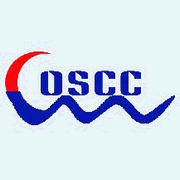
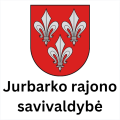
.jpg)

